Glauber Brante
Reinforcenment Learning-Aided NOMA Random Access: An AoI-Based Timeliness Perspective
Oct 07, 2024Abstract:In this paper, we investigate the age-of-information (AoI) of a power domain non-orthogonal multiple access (NOMA) network, where multiple internet-of-things (IoT) devices transmit to a common gateway in a grant-free random fashion. More specifically, we consider a framed setup composed of multiple time slots, and resort to the $Q$-learning algorithm to properly define, in a distributed manner, the time slot and the power level each IoT device transmits within a frame. In the proposed AoI-QL-NOMA scheme, the $Q$-learning reward is adapted with the aim of minimizing the average AoI of the network, while only requiring a single feedback bit per time slot, in a frame basis. Our results show that AoI-QL-NOMA significantly improves the AoI performance compared to some recently proposed schemes, without significantly reducing the network throughput.
Performance Analysis of 6TiSCH Networks Using Discrete Events Simulator
Oct 07, 2024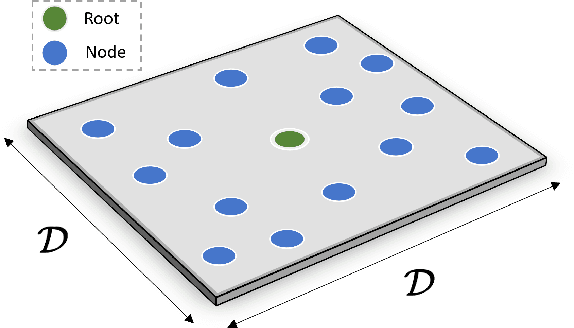
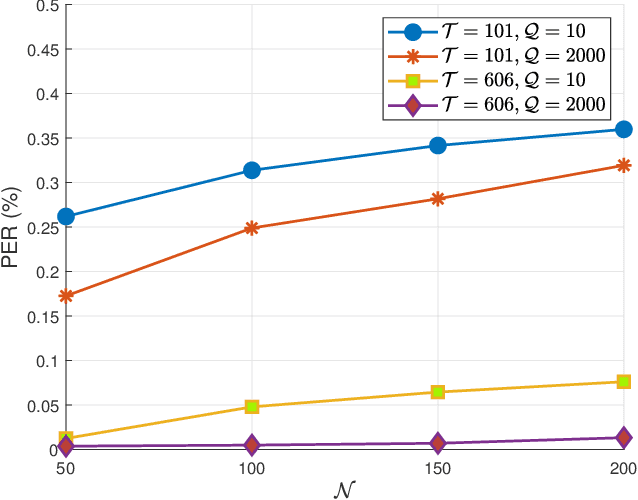
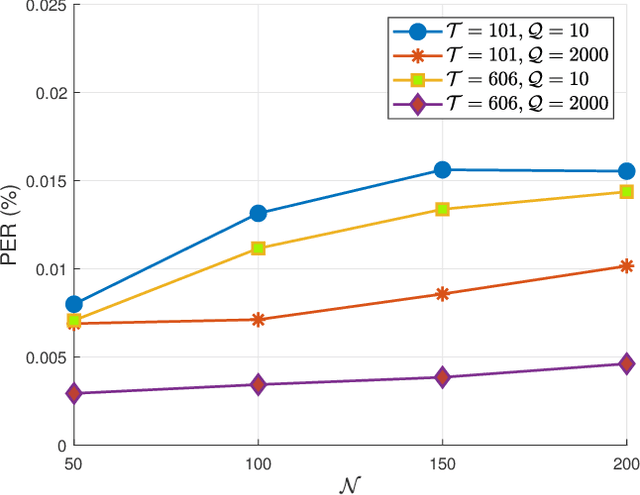
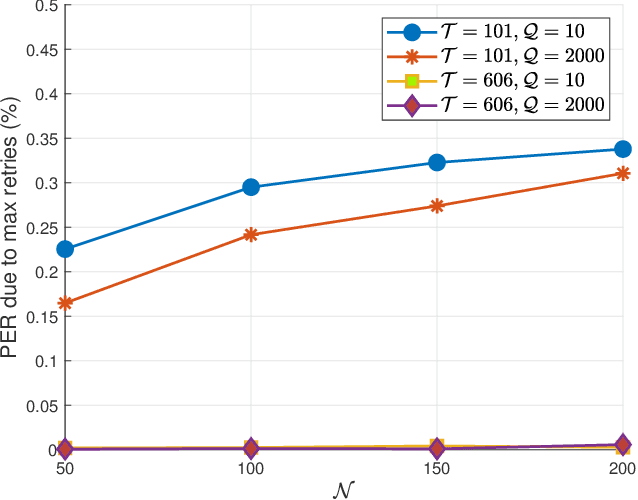
Abstract:The Internet of Things (IoT) empowers small devices to sense, react, and communicate, with applications ranging from smart ordinary household objects to complex industrial processes. To provide access to an increasing number of IoT devices, particularly in long-distance communication scenarios, a robust low-power wide area network (LPWAN) protocol becomes essential. A widely adopted protocol for this purpose is 6TiSCH, which builds upon the IEEE 802.15.4 standard. It introduces time-slotted channel hopping (TSCH) mode as a new medium access control (MAC) layer operating mode, in conjunction with IEEE 802.15.4g, which also defines both MAC and physical layer (PHY) layers and provides IPv6 connectivity for LPWAN. Notably, 6TiSCH has gained adoption in significant standards such as Wireless Intelligent Ubiquitous Networks (Wi-SUN). This study evaluates the scalability of 6TiSCH, with a focus on key parameters such as queue size, the maximum number of single-hop retries, and the slotframe length. Computational simulations were performed using an open-source simulator and obtained the following results: increasing the transmission queue size, along with adjusting the number of retries and slotframe length, leads to a reduction in the packet error rate (PER). Notably, the impact of the number of retries is particularly pronounced. Furthermore, the effect on latency varies based on the specific combination of these parameters as the network scales.
Decentralized RL-Based Data Transmission Scheme for Energy Efficient Harvesting
Jun 24, 2024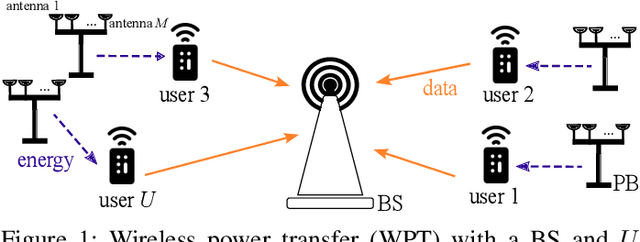
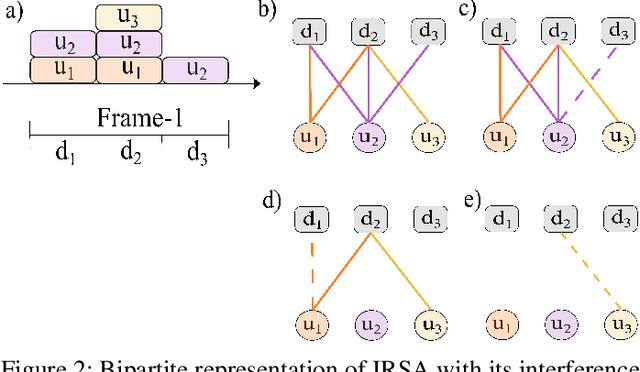
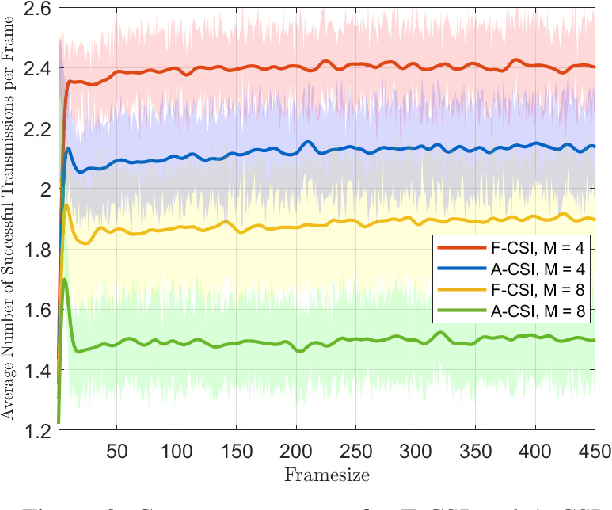
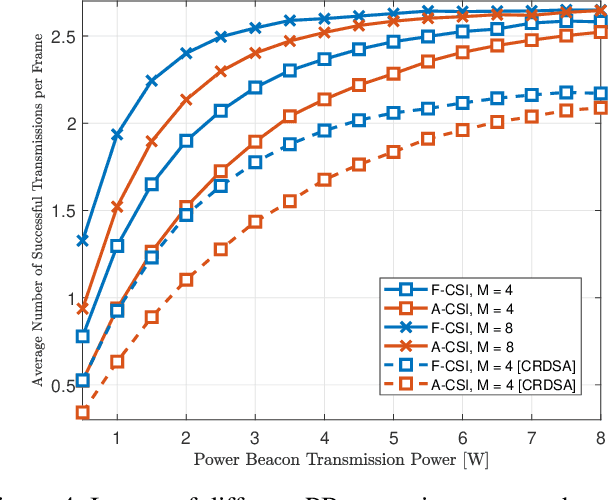
Abstract:The evolving landscape of the Internet of Things (IoT) has given rise to a pressing need for an efficient communication scheme. As the IoT user ecosystem continues to expand, traditional communication protocols grapple with substantial challenges in meeting its burgeoning demands, including energy consumption, scalability, data management, and interference. In response to this, the integration of wireless power transfer and data transmission has emerged as a promising solution. This paper considers an energy harvesting (EH)-oriented data transmission scheme, where a set of users are charged by their own multi-antenna power beacon (PB) and subsequently transmits data to a base station (BS) using an irregular slotted aloha (IRSA) channel access protocol. We propose a closed-form expression to model energy consumption for the present scheme, employing average channel state information (A-CSI) beamforming in the wireless power channel. Subsequently, we employ the reinforcement learning (RL) methodology, wherein every user functions as an agent tasked with the goal of uncovering their most effective strategy for replicating transmissions. This strategy is devised while factoring in their energy constraints and the maximum number of packets they need to transmit. Our results underscore the viability of this solution, particularly when the PB can be strategically positioned to ensure a strong line-of-sight connection with the user, highlighting the potential benefits of optimal deployment.
Exploring the Non-Overlapping Visibility Regions in XL-MIMO Random Access Protocol
Jul 19, 2021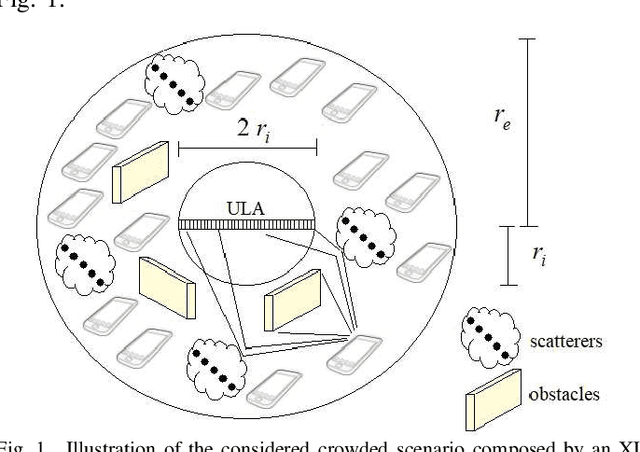
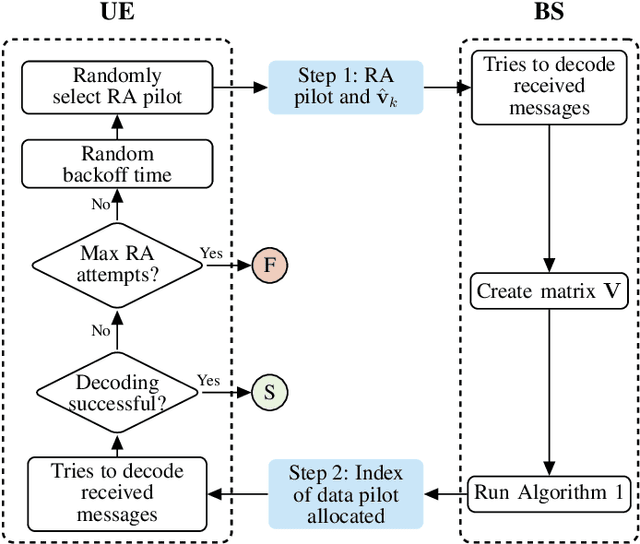
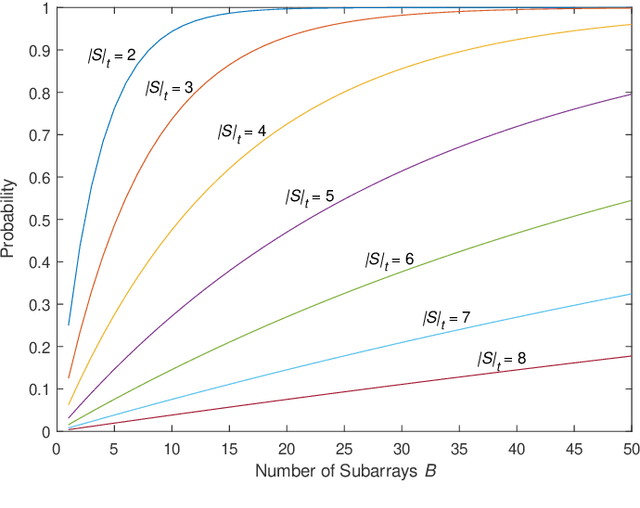
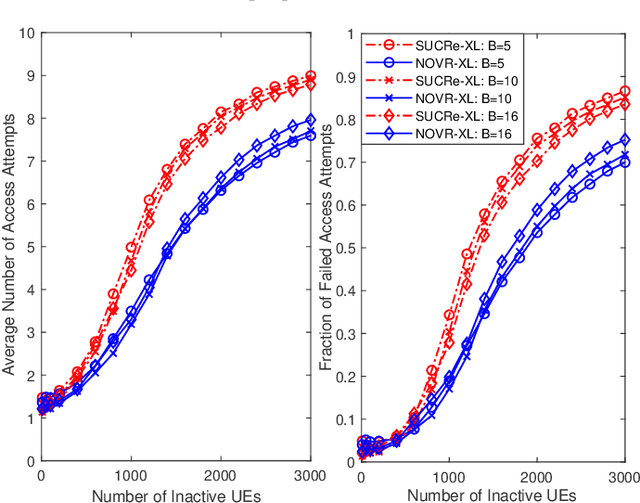
Abstract:The recent extra-large scale massive multiple-input multiple-output (XL-MIMO) systems are seen as a promising technology for providing very high data rates in increased user-density scenarios. Spatial non-stationarities and visibility regions (VRs) appear across the XL-MIMO array since its large dimension is of the same order as the distances to the user-equipments (UEs). Due to the increased density of UEs in typical applications of XL-MIMO systems and the scarcity of pilots, the design of random access (RA) protocols and scheduling algorithms become challenging. In this paper, we propose a joint RA and scheduling protocol, namely non-overlapping VR XL- MIMO (NOVR-XL) RA protocol, which takes advantage of the different VRs of the UEs for improving RA performance, besides seeking UEs with non-overlapping VRs to be scheduled in the same payload data pilot resource. Our results reveal that the proposed scheme achieves significant gains in terms of sum rate compared with traditional RA schemes, as well as reducing access latency and improving connectivity performance as a whole.
Two-Stage Channel Estimation for Hybrid RIS Assisted MIMO Systems
Jul 15, 2021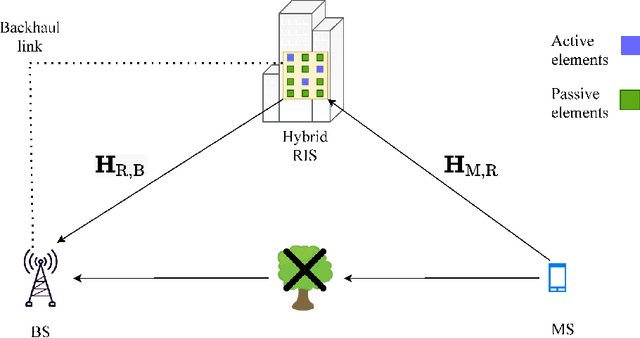
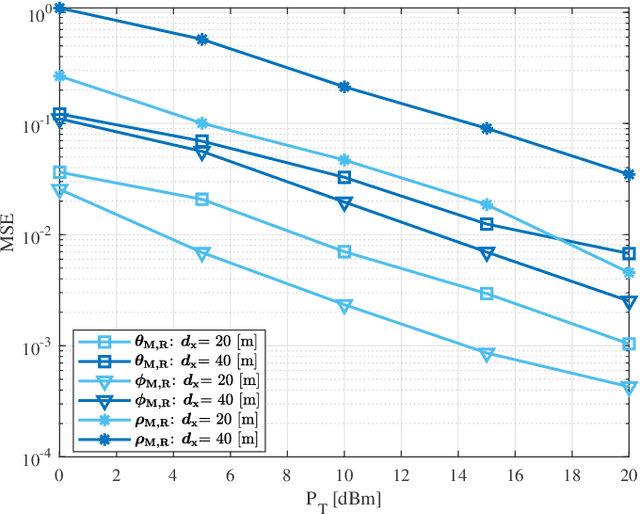
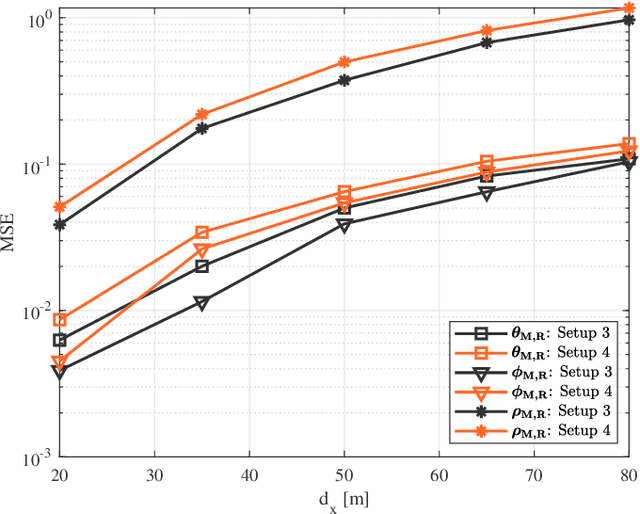
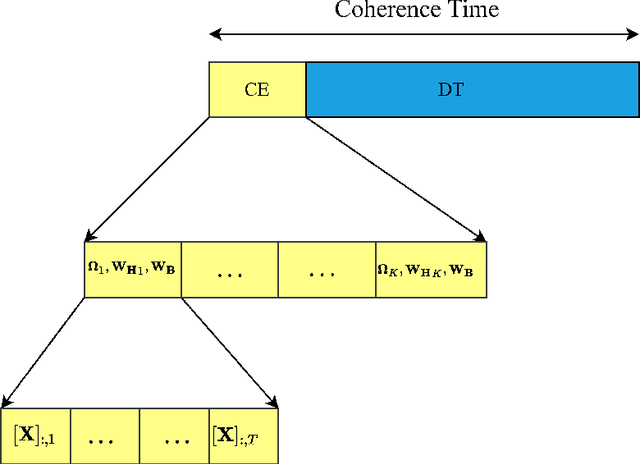
Abstract:Reconfigurable intelligent surfaces (RISs) have been proposed as a key enabler to improve the coverage of the signals and mitigate the frequent blockages in millimeter wave (mmWave) multiple-input multiple-output (MIMO) communications. However, the channel state information (CSI) acquisition is one of the major challenges for the practical deployment of the RIS. The passive RIS without any baseband processing capabilities brings difficulty on the channel estimation (CE), since the individual channels or the cascaded one can be estimated only at base station (BS) via uplink training or mobile station (MS) via downlink training. In order to facilitate the CSI acquisition, we focus on the hybrid RIS architecture, where a small number of elements are active and able to receive and process the pilot signals at the RIS. The CE is performed in two stages by following the atomic norm minimization to recover the channel parameters, i.e., angles of departure (AoDs), angles of arrival (AoAs), and propagation path gains. Simulation results show that the proposed scheme can outperform the passive RIS CE under the same training overhead. Furthermore, we also study the theoretical performance limits in terms of mean square error (MSE) via Cram\'er-Rao lower bound (CRLB) analyses.
 Add to Chrome
Add to Chrome Add to Firefox
Add to Firefox Add to Edge
Add to Edge